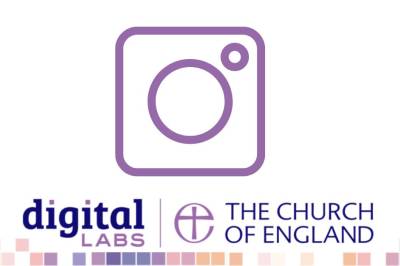19/04/2024
You have written your next social media post, an article or a new page for your parish website. To complete your article, you need an eye-catching photo and you quickly hop over to Google to see what’s available. You’ve found the one that is perfect for your content. But, have you paused to consider whether you are allowed to use this image?
Images are important elements in communicating your message more effectively to your audience. Choosing the right image can significantly drive user engagement on your webpage or social media post. After all, we live in a digital age where you must be able to grab your audience’s attention in a matter of seconds or they will move on.
However, the fact that images are freely accessible doesn’t mean that they are free to use. There can be serious consequences for using images without seeking the permission of the copyright holder. It is therefore important to understand the concept of copyright and how to navigate this without incurring legal repercussions.
What is copyright?
According to gov.uk, copyright “protects your work and stops others from using it without your permission”. You don’t have to apply for copyright – generally, the person who created the image, whether it is a photo, infographic, map, illustration etc, automatically assumes legal ownership of the work and retains exclusive rights as to how that image is distributed, reproduced, modified and who can use it. The copyright holder also does not have to produce a copyright notice or use the copyright symbol to enforce their copyright.
If the copyright holder discovers that you have used their image without their permission and/or without attribution, they have the right to demand that you purchase a licence to continue using the image on your website and/or ask for financial compensation. Legal action might also be taken if the copyright holder determines that the issue has not been resolved satisfactorily.
So how do you avoid infringing on someone’s copyright?
Pay up or seek permission
You have found an image and you really want to use it. The first step is to identify who the copyright holder is. If you cannot quickly determine the source of an image, Google Image Search may help you to track down the source. Once you’ve found the source, asking for permission might be sufficient but be mindful that the copyright holder may require payment for usage.
Get a free, royalty-free image instead
If your church has budgetary constraints, buying a photo from a stock image library like Shutterstock or iStock may not be an option. Creative Commons (CC) licenses allow the use of images for free under certain conditions. Free stock photo sites such as Unsplash, Wikipedia, Flickr and Pixabay offer a wide selection of good-quality, royalty-free images.

You could also use Google’s Advanced Image Search which allows you to filter your results by ‘usage rights’ to find the right image: Creative Commons (CC), Commercial or other licenses.
There are different types of Creative Commons licenses available. All are free but with varying restrictions. The least restrictive is Creative Commons Zero (CC0). Commercial licenses may require payment.

You should always give credit to the copyright holder as specified by the CC license, which will also give you and your church an extra layer of protection in the event of a copyright claim.
How about using my own images?
If you as an employee/volunteer at your church or organisation created an image as part of your role, the church/organisation owns the copyright, and you are free to use it on their website and social media channels as you like.
Otherwise, if you or your church/organisation have commissioned a third party to create imagery on your behalf, it is important to either transfer copyright ownership of the resulting work under contract or obtain permission to use such images.
How do you assert your copyright? A simple attribution is all you need. See an example below from The Guardian.

What about AI-generated images?
We are all increasingly including elements of AI into our creative output, sometimes without even knowing it. Using tools to retouch photos on Instagram before posting is one example. And we have all heard of the power of ChatGPT to create images, text or video from simple to complex prompts.
AI-generated images present a copyright conundrum. AI is based on powerful algorithms that are ‘trained’ on vast quantities of existing material scaped from the internet, often without the original author’s consent. While you may have given particular prompts to the AI generator to produce the work, there may be copyright infringements because of the human sources used to train the algorithm.
As unique as your resulting artwork may seem to be, current law determines that only human-generated work is eligible for copyright. So although you created what is an original artwork, you are not protected by copyright. As this sector evolves, governments may have to reconsider copyright laws. But we are not at that tipping point yet.
The advice? Use AI-generated images for personal use only.
Summary
You should assume that any image you come across online belongs to somebody. If you did not create the image, you must seek permission to use it. The good news is that there are image libraries that allow you to use images free of charge.
Whether you created the image yourself, commissioned it or obtained it from a third party, it is good practice to credit the copyright holder, even if that person is you. Finally, while AI-generated images are not protected by copyright, we recommended these for personal use only.
By following these simple rules, you’ll avoid infringing on someone’s copyright. It is not worth the hassle, financial losses and potential reputational hit to your church or organisation, however unintentional the infringement is.
- Joe Williams, Web and Apps Manager.
.


